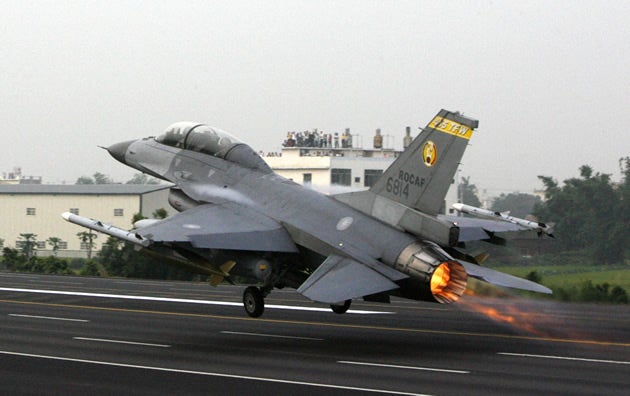During his confirmation hearing in the Senate Armed Services Committee, Mark Lippert, nominee for Assistant Secretary of Defense for Asian and Pacific Security Affairs, was asked about the Administration’s decision to provide the Taiwan air force with only upgrades to its 20-year-old F-16 A/Bs rather than selling new F-16 C/Ds, as Taipei has requested. (It is important to note here that the F-16 C/D sale was to replace the obsolete F-5s and Mirage-2000s that are still in the Taiwan inventory rather than augment the current F-16 A/B fleet.)
Stating that he was no expert, Lippert claimed that the sale was “the most bang for the buck, quickly” and that this would get the 160-plus aircraft over to Taipei as soon as possible. Lippert insisted that he was basing his answer on testimony that Assistant Secretary of State Kurt Campbell and Acting Assistant Secretary of Defense Peter Lavoy had given, presumably before the House Foreign Affairs Committee.
The problem is that Campbell and Lavoie never said this. The closest is Lavoy’s comment that the retrofitting of Taiwan’s 145 aircraft “reflects a smart defense policy that provides real and immediate contributions to Taiwan’s security.” Nor is it likely that they would make as bald a claim as Lippert does about the upgrades providing rapid improvement of Taiwan’s air situation.
Both Campbell and Lavoy—old East and South Asia hands, respectively—are almost certainly aware that the F-16 A/B upgrades that are being discussed will, in fact, take longer to bear fruit than the sale of F-16 C/Ds. Indeed, “a senior Lockheed Martin official” (which is responsible for the upgrades) indicated to The Hill newspaper that the development work necessary for upgrading the F-16s’ electronics and radar suites is still incomplete, as it must be customized for the F-16 A/Bs in Taiwan’s inventory.
Given that the Taiwan F-16s won’t have their engines upgraded, the power requirements of new radars must be matched against the lower electrical generating capacity of the older engines—no simple task. Consequently, the time required to upgrade Taiwan’s F-16s will, in fact, take longer than simply buying new F-16 C/Ds—much as upgrading a 1990 automobile with new sound system, air conditioning, and in-dash GPS would take longer than simply buying a new 2011 model.
The first upgrades will not be complete for more than five years, and the retrofit of the entire fleet will probably take at least 10. So for at least a half decade, and probably longer, the total number of F-16s available to patrol the skies over the island will be reduced—during which time it is unlikely the Chinese air force will be slowing down its modernization.
None of which addresses the larger point, which Lippert pointedly avoided: that the sale of F-16 C/Ds is intended to replace obsolete F-5 aircraft. Whatever the pace of F-16 A/B upgrades, what the Administration and Lippert have failed to account for is that the overall number of aircraft that Taiwan will be able to field will drop with the refusal to sell F-16 C/Ds. Senator John Cornyn (R–TX) is right to press them on this.
